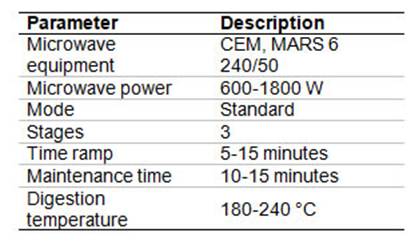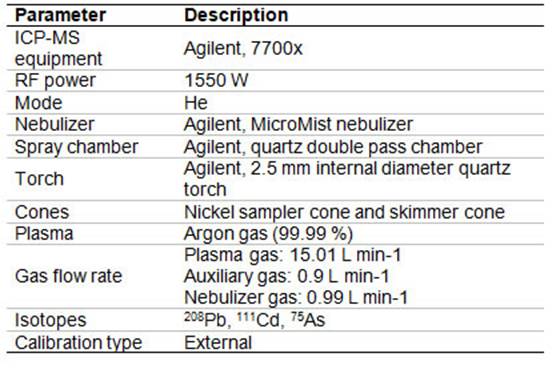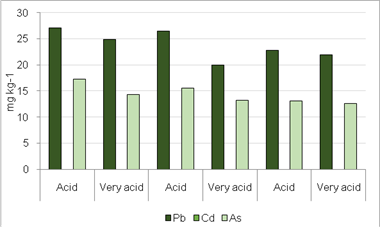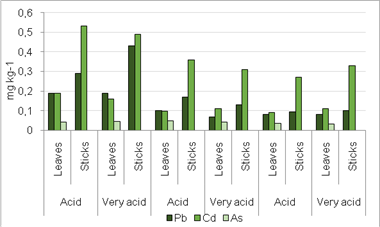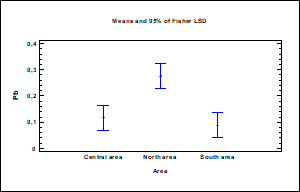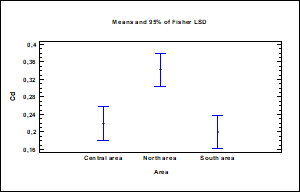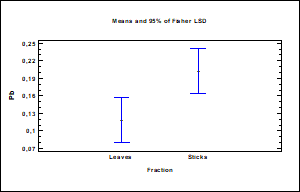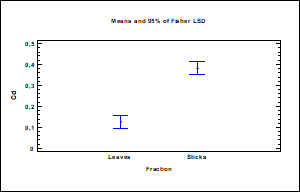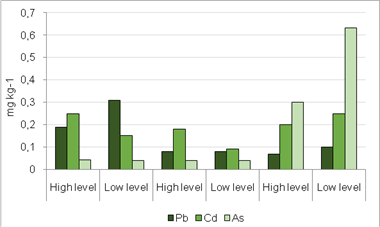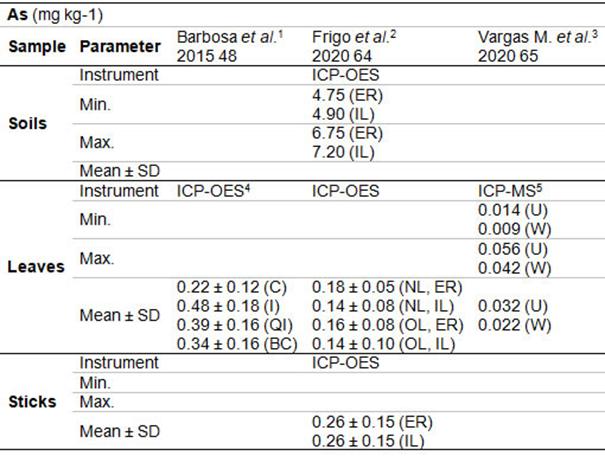1. Introduction
Yerba mate (Ilex paraguariensis Saint-Hilaire) is an endemic species of South America, cultivated for commercial purposes only in northeastern Argentina (Misiones and northeastern Corrientes), in southern Brazil, and southeastern Paraguay. In this region, its processing and consumption have great economic and sociocultural importance 1, 2, 3, 4, 5, 6, 7.
Deep red soils are the most suitable for this crop 8. These soils stand out for their high acidity, indicating that this species is tolerant to this condition 9. Iron content can vary from less than 0.1 % to more than 30 %, mainly in oxides and hydroxides form. In addition, these types of soils have different manganese and aluminum contents. The low concentration and solubility of phosphorus make it one of the most limiting nutrients 10. These soils have low fertility compared to others, so fertilization practices are required 11.
Nutrients are essential for plant growth and their main sources are chemical and organic fertilizers 12, 13. In addition, pesticides are used on crops to repel, destroy, or control any pest or to regulate plant growth 14. Agricultural inputs often contain trace elements, such as heavy metals, which are considered harmful to human health and are not essential for plants. As a result, the use of these products may result in metal accumulation in soils and crops, potentially influencing the toxicity of the food chain 13, 15, 16, 17.
The term “heavy metals” lacks a standardized definition in scientific literature, and in the vast majority of instances, the element density is considered as a defining factor 18. It is generally used to refer to metals and metalloids with atomic number greater than 20 and density greater than 5000 kgm-3, associated with environmental pollution, toxicity, and adverse effects on biota 19.Heavy metals can be absorbed from soil by plant roots and can also penetrate from atmosphere through the surface of leaves. They are considered important chemical contaminants in food, where they are frequently evaluated due to their ability to accumulate in the food chain 16, 20, 21.
Lead (Pb) is an environmental contaminant, whose natural sources include volcanic activity and geochemical weathering 22.
However, its ubiquitous occurrence is largely the result of anthropogenic activities such as mining, smelting, and welding, and its use in ammunition, paints, gasoline, and battery and pipe manufacturing 23, 24, 25. Control measures to regulate or prohibit Pb content in paints, gasoline, food cans, and water pipes significantly reduced levels of this element in the atmosphere 24, 25, 26, 27.
The central nervous system is the main target organ of Pb toxicity. A developing brain is more vulnerable to Pb neurotoxicity than the mature brain and even relatively low levels of exposure can cause severe neurological damage 22, 23, 24, 25, 28. International Agency for Research on Cancer (IARC) classifies inorganic Pb compounds in Group 2A, as probably carcinogenic to humans 24, 25, 29.
Cadmium (Cd) is a naturally occurring environmental pollutant resulting from volcanic emissions and weathering of rocks 18, 30, 31, 32. It also arrives from industrial and agricultural sources, including industrial emissions, mining and refining of non-ferrous metals, fossil fuel combustion, incineration and waste disposal, its use in batteries, semiconductors, pigments, enamels and glazes, manufacture and application of phosphate fertilizers and sewage sludge 18, 30, 31, 32, 33, 34.
Cd is mainly toxic to kidneys and can cause kidney failure. It can also cause bone demineralization, either through direct bone damage or indirectly as a result of kidney dysfunction 23, 31, 35, 36. IARC classifies Cd and Cd compounds in Group 1, as carcinogenic to humans 29, 31, 36.
Arsenic (As) appears naturally in the environment due to volcanic phenomena, rock disintegration and microbial activities 37, 38, 39. Industrial activities that aggravate pollution are mining, smelting of non-ferrous metals, and energy production from fossil fuels. The As-containing compounds have been used commercially for centuries as agricultural chemicals and wood preservatives 18, 37, 40, 41. Skin lesions, characterized by hyperkeratosis of the palms of the hands and the soles of the feet, as well as melanosis and leukomelanosis, are some symptoms of chronic intoxication. Hyperkeratosis is painful and can affect daily activities and reduce quality of life 38, 42. IARC classifies As and inorganic As-compounds in Group 1, as carcinogenic to humans 29, 41, 43.
Dietary intake is the main route of human exposure to heavy metals and long-term consumption of contaminated foods increases the risk of exposure and adverse effects on human health 16, 44, 45.
Resolution 12/11 of Southern Common Market (MERCOSUR, by its name in Spanish Mercado Común del Sur), included in the Argentine Food Code (CAA, by its name in Spanish Código Alimentario Argentino), establishes the following maximum limits for inorganic contaminants in yerba mate: 0.60 mgkg-1 for lead, 0.40 mg kg-1 for cadmium and 0.60 mg kg-1 for arsenic.
This regulation applies in the territory of MERCOSUR member states, to trade between them and to extra zone imports. In addition, maximum contents apply to solid products (yerba mate) and not to their consumption forms 46.
The objective of this work was to evaluate the influence of soil acidity and fertilization practices in Misiones(Argentina) on Pb, Cd, and Ascontent in soil samples and yerba mate plantations.
2. Materials and methods
2.1. Samples
Soil and branch samples were taken from Ilex paraguariensis plantations of different geographical origins between July and August 2021. These commercially exploited plantations were located in the north, centre and south of Misiones, Argentina. Two experiments were carried out: one with different levels of soil acidity (experiment 1) and the other with different levels of fertilisation (experiment 2). The plantations in each geographical region were previously selected using a database available at the Agricultural Experimental Station of the National Institute of Agricultural Technology (INTA) in Cerro Azul.
2.1.1. Experience 1: influence of soil acidity
Three variables were evaluated: cultivation area (3 levels: north, central, and south area), soil acidity (2 levels: acid and very acid), and plant fraction (2 levels: leaves and sticks).
In the northern area, samples corresponding to acid soils were collected in Comandante Andresito municipality (General Manuel Belgrano department) and samples corresponding to very acid soils in Wanda municipality (Iguazú department).In the central zone, both samples corresponding to acid and very acid soils were collected in Jardín América municipality (San Ignaciodepartment). In the southern area, the two samples corresponding to acid and very acid soils were collected in Itacaruaré municipality (San Javierdepartment).
Each soil sample was composed of 4 sub-samples (soils of 4 plants that were later sampled) that were collected from the middle of the street towards the line (external zone of projection of the crown) at a depth of 20 cm 47. Soil samples were dried in an oven at 103 °C, size was reduced by quartering, and samples were conditioned in double hermetic plastic bags.
To corroborate the acidity of each sample, pH was measuredwithout replicates in 1 N potassium chloride saline solution (pH-KCl), with a soil-solution ratio of 1:2.5. An Oakton model WD-35620 benchtop pH meter was used.
Each branch sample was made up of four sub-samples taken from the middle crown and from all cardinal directions (north, south, east, and west)48. Branches were dried in an oven at the temperature of 60 °C, leaves and sticks were separated, fractions size was reduced by quartering, and each fraction was ground separately in a ceramic mortar. Samples ofleaves and sticks were conditioned in double hermetic plastic bags.
Soil, leaf, and stick samples were sent to a chemical analysis laboratory, and Pb, Cd and As content was determined without replication.
2.1.2. Experience 2: influence of fertilization level
Two variables were evaluated: cultivation area (3 levels: north, central, and south area) and fertilization system (2 levels: high and low).High fertilization (intensive) corresponded to plantations with amounts of fertilizers greater than 500 kgha-1year-1, while low fertilization (non-intensive) corresponded to plantations with amounts of fertilizers lower than 300 kgha-1 year-1.In the northern area, samples were collected from plantations with high fertilization in Comandante Andresito municipality (General Manuel Belgrano department) and samples from plantations with low fertilization in Wanda municipality (Iguazú department).
In the central zone, both high and low fertilization samples were collected in Santo Pipó municipality (San Ignacio department).
In the southern zone, the two samples corresponding to high and low fertilization were collected in Campo Ramón municipality (Oberá department).
Each branch sample was made up of four sub-samples taken from the middle crown and from all cardinal directions (north, south, east, and west) 48. The branches were dried in an oven at a temperature of 60 °C, the leaves and sticks were separated, the fractions were reduced in size by quartering and each fraction was ground separately in a ceramic mortar. Mixtures (reconstituted samples) were prepared with a ratio of 80 % ground leaves and 20 % ground sticks and packed in double airtight plastic bags.
These samples were sent to a chemical analysis and Pb, Cd, and Ascontent was determined without replication.
2.2. Instrumental
Determinations of Pb, Cd and As content in each sample were carried out using Inductively Coupled Plasma Mass Spectrometry (ICP-MS), before acid digestion in microwaves, at Centro de Investigación y Asistencia Técnica a la Industria (CIATI AC), located in Villa Regina, Río Negro province, Argentina.
2.2.1. Reagents and solutions
The following reagents and solutions were used:
Grade I ultrapure water, obtained with Milli-Q® Advantage A10 System (Millipore) water purification system, obtaining a resistivity of 18.2 MΩcm-1.
Hydrochloric acid (HCl) and nitric acid (HNO3) Merk, Suprapur, purified by sub-boiling distillation.
Multielement calibration standard solution, 100 mg L-1, Scharlau.
Monoelement solutions grade AA, Merk (Pb Reference No. 1.19776.0500, Cd Reference No. 1.19777.0500, As Reference No. 1.19773.0500).
Interference Check Solution. Agilent Part Number “A” 5188-6526, “B” 5188-6527.
2.2.2. Microwave acid digestion
Table 1 shows the equipment used to perform microwave acid digestion as well as operating conditions.
Table 1: Microwave equipment and operating conditions.
2.2.3. Determination of Pb, Cd, and Ascontent by ICP-MS
Table 2 shows data from instruments used to determine Pb, Cd, and Ascontent in samples, as well as operating conditions.
Table 2: ICP-MS equipment and operating conditions.
2.2.4. Quality parameters
Calibration standards were prepared from a multi-element solution, diluted with a 1 % (v/v) HNO3 solution, purified by sub-boiling distillation. The concentrations of the calibration solutions for these elements were:
Pb: 0 - 0.04 - 0.1 - 1 - 10 - 100 - 500 ugkg-1
Cd: 0 - 0.04 - 0.1 - 1 - 10 - 100 - 500 ug kg-1
As: 0 - 0.2 - 0.5 - 1 - 10 - 100 - 500 ug kg-1
Calibration curves followed a linear behavior (R2> 0.995). Terbium (Tb) was used as the internal calibration standard for Pb and Cd and germanium (Ge) was used as the internal calibration standard for As.
Control solutions were prepared from solutions different from those used in the calibration curve. Every 20 samples were introduced into the equipment as a control to check the curve and the signal throughout the batch.Solutions A and B (Interference Check Solution) were used to verify polyatomic interferences.The limits of detection (LOD) were calculated as 3 times thenoise signal, while limits of quantification (LOQ) were calculated as 10 times thenoise signal. Table 3 presents reported LOD and LOQ values for Pb, Cd, and As in each type of sample tested.
Table 3: LOD and LOQ values reported for Pb, Cd, and As in each type of sample.
2.2.5. Analytical methods
The analytical methods followed were AOAC 2015.01 for the determination of Pb, Cd and As by ICP-MS, with prior microwave acid digestion, in food and beverage samples 49, EPA 3051A for microwave acid digestion of soil samples 50 and EPA 6020A for the determination of Pb, Cd and As by ICP-MS in soil samples 51.
2.3. Statistical analysis
Statistical analyses of the data obtained were carried out with the STATGRAPHICS® Centurion XVI software 52.
3. Results and Discussion
3.1. Experience 1: influence of soil acidity
Values of pH-KCl measured in acid soil samples were between 3.9 and 4.7, while in very acid soil samples were between 3.6 and 3.9.
Figure 1 shows the Pb, Cd and As content in soils of yerba mate plantations, located in the northern, central and southern areas of Misiones, considering different levels of soil acidity.
In all the cases, it was possible to quantify Pb content (between 19.9 and 27.0 mg kg-1) and As content (between 12.6 and 17.3 mg kg-1). Cd content was not detected in any of the samples.
In Argentina, Regulatory Decree 831/93 of Law 24.051 on hazardous waste presents quality guide levels for agricultural soils, establishing a maximum of 375 mg kg-1 for Pb, 3 mg kg-1 for Cd and 20 mg kg-1 for As 53.However, Resolution 264/2011 of the National Agri-Food Health and Quality Service (SENASA) establishes maximum permissible limits in soils of 50 mg kg-1 for Pb and 1 mg kg-1 for Cd. This regulation does not establish maximum limits for As in soils 54.
Figure 1: Pb, Cd, and As in yerba mate plantations soils according to acidity.
Values that were quantified in soil sampleswere below the guide levels and the maximum permitted limits, complying with quality for soils for agricultural use.
Figure 2 shows Pb, Cd and As content inyerba mate leaves and sticks, located in the north, central and south areas of Misiones, considering different levels of soil acidity.
Figure 2: Pb, Cd and As content in yerba mate leaves and sticks according to acidity.
In all cases, Pb content (between 0.070 and 0.190 mg kg-1 in leaves and between 0.093 and 0.430 mg kg-1 in sticks) and Cd content (between 0.090 and 0.190 mg kg-1 in leaves and between 0.270 and 0.530 mg kg-1 in sticks) could be quantified. In leaf samples, it was possible to quantify As content (between 0.034 and 0.048 mg kg-1); however, in stick samples this element could be detected, but in no case could be quantified ( LOQ). Stick samples of the north area yerba mate exceeded the maximum limit allowed for Cd. In all samples, Pb and Cd content were higher in sticks than in leaves.
A multifactorial analysis of variance (ANOVA) was performed to determine which factors had a statistically significant effect on Pb and As content in yerba mate plantation soils (dependent variables). Two factors were evaluated: cultivation area (3 levels: north, central, and south area) and soil acidity (2 levels: acid and very acid). Results showed that none of the factors had a statistically significant effect on Pb and As content in soils, for a confidence level of 95 %. Since Cd could not be detected in soil samples, statistical analyses for this element were not performed.
In addition, a multifactorial ANOVA was performed to determine which factors had a statistically significant effect on Pb and Cd content in yerba mate (dependent variables).
Three factors were evaluated: cultivation area (3 levels: north, central, and south area), soil acidity (2 levels: acid and very acid), and plant fraction (2 levels: leaves and sticks). Results showed that cultivation area and plant fraction had a statistically significant effect on Pb and Cd content in plantations, for a confidence level of 95 %. However, soil acidity did not have a statistically significant effect on Pb and Cd content in plantations. Yerba mate plantations sampled, for different levels of soil acidity, were previously selected from an INTA database. In some cases, the pH of acid soil did not differ widely from the pH of very acid soil, which could have influenced the results. Since As content in stick samples could not be quantified, statistical analyses for this element were not performed.
Figure 3 shows mean graphs for Pb and Cd content in yerba mate, according to cultivation area (factor with significant influence).
Figure 3: Mean graphs for Pb (left) and Cd (right) content in yerba mate according to area.
In yerba mate, Pb and Cd mean content in the north area showed significant differences with Pb and Cd mean content in yerba mate from the other two areas. North area plantations presented maximum Pb and Cd content. These differences could be influenced by soil-specific characteristics, relief and rainfall regimes of each sampled place.
Figure 4 shows mean graphs for Pb and Cd content in yerba mate, according to plant fraction (another factor with significant influence).
Pb and Cd mean content in yerba mate leaves showed significant differences with Pb and Cd mean content in yerba mate sticks. Sticks presented maximum Pb and Cd content.
Figure 4: Mean graphs for Pb (left) and Cd (right) content in yerba mate according to plant fraction.
3.2. Experience 2: influence of fertilization level
Figure 5 shows the Pb, Cd, and As content of leaf and stick mixtures from yerba mate plantations in north area, central area and south area of Misiones, with different fertilization systems (high and low).
Figure 5: Pb, Cd, and As content in yerba mate according to fertilization level.
In all cases, Pb content (between 0.070 and 0.310 mg kg-1), Cd content (between 0.090 and 0.250 mg kg-1), and As content (between 0.039 and 0.630 mg kg-1) could be quantified. South area yerba mate sample, with low fertilization level, slightly exceeded the maximum limit allowed for As.
Multivariate ANOVA was performed to determine which factors had a statistically significant effect on Pb, Cd, and As content in yerba mate (dependent variables). Two factors were evaluated: cultivation area (3 levels: north, central and south area) and fertilization level (2 levels: high and low). Results showed that none of the factors had a statistically significant effect on Pb, Cd and As content in yerba mate, for a confidence level of 95 %.
In experience 1, the highest Cd contents were found in the stick samples of the north area, and in experience 2, the highest As contents were found in the yerba mate samples of the south area.In both cases, these situations could be due to particular conditions of geographical areas and plantations. Numerous factors influence the absorption of elements by crops.
The distribution and availability of toxic elements in the soil profile are determined by some characteristics such as pH, redox potential, and type and quantity of adsorption components 55, 56. Types of clay, oxides and hydroxides, and organic matter are part of the soil solid phase and provide permanent and variable charges, responsible for the sorption of many contaminants 55. Iron, aluminum, and manganese oxides and hydroxides are the main soil constituents involved in the metal specific adsorption as an important retention mechanism 56, being able to be released into the soil solution and absorbed by plants. These are the main characteristics that can be related to values found in this work.Other particular conditions affect the availability and absorption of the elements. In the case of Cd, an important source of this metal is phosphate fertilizers. However, phosphate added to soils can reduce the mobility of Cd 57. On the other hand, zinc competes with Cd for plant uptake 58. In As case, its chemical and mineralogical speciation affects its mobility, availability, and toxicity. In addition, phosphate presence competes with As for adsorption sites 56. Phosphate fertilizers addition to agricultural soils favors As availability in soil solution 59. Similarly, phosphorus competes with As for plant uptake 60. However, the soils of the region where yerba mate grows are deficient in phosphorus, and doses of this element added are generally too low to presume that these mechanisms would have a significant influence.The specific soils and plantations of each region need to be characterized in order to propose appropriate management practices.
3.3. Results obtained by other authors
Table 4, Table 5 and Table 6 present the main published works on Pb, Cd and As content, respectively, in Ilex paraguariensis plantations soils, leaves, and sticks.
Poletti et al. (2014) 61 analysed Pb and Cd content in virgin and organically and chemically fertilised soils in the states of Paraná (PR), Santa Catarina (SC) and Rio Grande do Sul (RS) in Brazil.Average values between 8.23 and 34.20 mg kg-1 for Pb and between 1.76 and 3.53 mg kg-1 for Cd were found. For both metals, concentrations were similar in the PR and SC regions and relatively lower in RS. The virgin soil in RS had a higher Pb concentration than in the other regions and the authors mention soil diversity as a possible explanation.
Table 6: As content in soils, leaves and sticks of Ilex paraguariensis plantations.
Barbosa et al. (2015) 48 studied the Pb, Cd and As content in mature leaves of yerba mate trees (progeny) from different origins (Cascavel, Ivaí and Quedas do Iguaçu from the state of PR and Barão de Cotegipe from the state of RS), grown in Pinhais (PR), Brazil.
Mean values between 0.45 and 0.61 mg kg-1 for Pb, between 0.12 and 0.14 mg kg-1 for Cd and between 0.22 and 0.48 mg kg-1 for As were reported. Mean Pb content in samples from Quedas do Iguaçu reached the maximum allowed level.
Magri et al. (2017) 62 determined Pb and Cd content in soils and yerba mate leaf samples, coming from homogeneous crops and agroforestry systems of RS, Brazil. In soils, concentrations between 6.50 and 20.63 mg kg-1 for Pb and between 0.62 and 3.61 mg kg-1 for Cd were obtained. In leaves, concentrations between 0.07 and 0.58 mg kg-1 for Pb and between 0.08 and 1.94 mg kg-1 for Cd were obtained. Both soils and yerba mate leaves had similar Pb and Cd content, independently of the cultivation system adopted. Leaf samples did not exceed the maximum allowed limit for Pb. However, some of these samples greatly exceeded the limit value for Cd.
Barbosa et al. (2018) 9 grew 2 clones of yerba mate in pots on 4 types of acid soils, with and without phosphorus addition, and evaluated Pb and Cd content in leaves.
Mean values between 0.38 and 0.54 mg kg-1 for Pb and between 0.15 and 0.25 mg kg-1 for Cd were found. The authors concluded that phosphorus fertilization exerted different effects on Pb content (increase/decrease/null) and Cd content (decrease/null) in leaves. Furthermore, genotypic variation influenced Pb content in leaves. Average Pb and Cd concentrations did not exceed the maximum permitted limits.
Barbosa et al. (2020) 63 analysed Pb and Cd content in yerba mate leaves of native plants from an araucaria forest in the municipality of Cruz Machado (PR), Brazil.Mean contents of 0.21 mg kg-1 for Pb and 0.14 mg kg-1 for Cd were found, both below limit values.
Frigo et al. (2020) 64 studied the Pb, Cd and As content in soils, new and old yerba mate leaves and yerba mate sticks in the municipalities of Erechim (ER) and Ilópolis (IL), Brazil.
In soils, contents between 13.50 and 21.20 mg kg-1 for Pb, between 0.11 and 0.85 mg kg-1 for Cd and between 4.75 and 7.20 mg kg-1 for As were reported. In bothnew and old leaves, average values between 0.16 and 0.40 mg kg-1 for Pb, between 0.12 and 0.21 mg kg-1 for Cd, and between 0.14 and 0.18 mg kg-1 for As were found. In sticks, average concentrations of 0.17 mg kg-1 for Pb, between 0.31 and 0.50 mg kg-1 for Cd and 0.26 mg kg-1 for As were reported. In each municipality, average Pb concentrations were higher in old leaves, while those of Cd and As were similar in new and old leaves. In addition, mean Pb concentrations in sticks were lower than in old leaves and mean Cd and As concentrations in sticks were higher than in leaves.This may indicate that Pb was deposited on theleaves surface over time. Only average Cd content in ER stick samples exceeded the maximum allowable limit.Vargas Motta et al. (2020) 65 determined Pb and Cd content in soils and Pb, Cd and As content in yerba mate mature leaves, in 30 native sites in southern Brazil, with and without leaves washing.
In soils, concentrations varied between 7.13 and 33.37 mg kg-1 for Pb and between 0.021 and 0.285 mg kg-1 for Cd. In leaves, concentrations ranged between less than the detection limit and 0.602 mg kg-1 for Pb, between 0.077 and 0.856 mg kg-1 for Cd and between 0.009 and 0.056 mg kg-1 for As.According to the authors, washing decreased Pb and As concentrations, suggesting atmospheric contributions and dust deposition for these elements. Some Pb values were close to the maximum allowable limit, while some Cd values greatly exceeded the limit.Magri et al. (2021) 7 evaluated Pb and Cd content in soils and mature leaves of yerba mate in Brazil, Argentina and Paraguay, both in agroforestry systems and in full sun cultivation.In soils, values between 5.80 and 37.51 mg kg-1 for Pb and between 0.11 and 1.54 mg kg-1 for Cd were reported. Concentrations in leaves ranged between 0.11 and 2.59 mg kg-1 for Pb and between 0.10 and 1.61 mg kg-1 for Cd. According to the authors, the cultivation management adopted did not reflect differences in Cd and Pb concentrations between soils and leaves. In addition, these metal concentrations in leaves were not related to soil type. The 38 % of samples presented Pb levels above the limit, 21 % of samples presented Cd levels above the limit, and in 9 % of samples both elements were present in concentrations higher than permitted limits.Some authors mention that the distinction by country of origin is mainly due to the way yerba mate is grown and processed, which may contribute to the elemental concentration profiles of yerba mate 66.However, other authors suggest that the differences found in heavy metal concentrations can be explained by the geological formation of each region 61 and that the soil used for the cultivation of Ilex paraguariensis is probably the main factor influencing its elemental composition and not the country of origin 67.
4. Conclusions
Pb, Cd, and As levels in soils and yerba mate plantations in Misiones(Argentina) show great variability. The contents of these elements in the soils are below the guideline levels and the maximum permissible limits, complying with the quality of soils for agricultural use.
None of the 6 leaf samples exceeded thePb, Cd, and As maximum limits allowed. Considering the 6 stick samples, 2 exceeded the Cd maximum limit (33.3%). Considering the 6 mixtures of leaf and stick samples, 1 exceeded theAs limit (16.7%).
Determinations made according to soil acidity indicate that there are significant differences between the north area and other areas and also between plant fractions. However, soil aciditydoes not have a significant effect on Pb and Cd content in plantations. As content in stick samples could not be quantified. Therefore, the statistical analyses for this element were not performed.Determinations made according to the fertilization level applied indicate that there are no significant differences between areas (unlike previous experience) or between fertilization systems.
It is important to highlight that Pb and Cd content in sticks is higher than the content of these elements in leaves. This implies that thepackage composition of processed yerba mate (leaf and stick percentages) would also contribute with these metals to the commercial product.
When comparing concentrations obtained with those reported by other authors in Ilex paraguariensissoils and plantations, lower and higher values are found. Several variables could influence Pb, Cd, and As concentration in yerba mate, such ascrop type and its characteristics, plant age, elements toxicity and their availability in soil solution, interaction with other elements, physical and chemical soil properties or agricultural inputs use.Taking into account that Pb, Cd and As are toxic and that the maximum content of this contaminants in yerba mate are regulated for commercialization in MERCOSUR, it is important to consider mitigation measures so that plants do not accumulate them excessively in their tissues.
5. Acknowledgments
The data presented belongs to Eng. C.M. Martín Thesiscarried out in Doctorado en Ciencias Aplicadas(Facultad de Ciencias Exactas, Químicas y Naturales;Universidad Nacional de Misiones).
Received: 18/11/2022
Accepted: 09/11/2023













